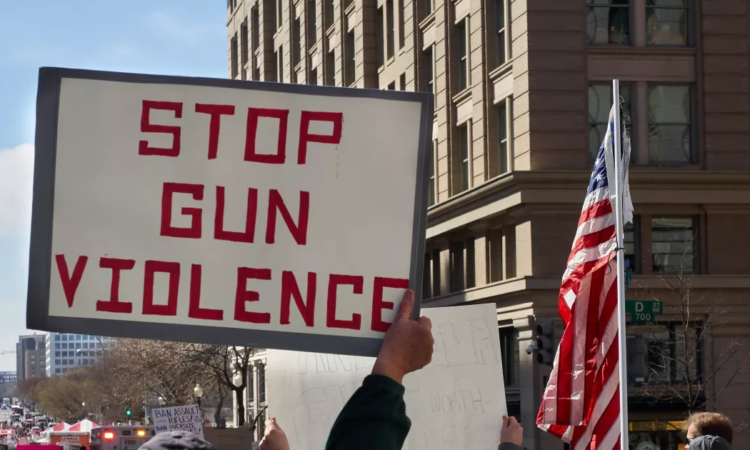On gun violence, the United States is an outlier – Institute for Health Metrics and Evaluation |

Published October 31, 2023
The US ranks first for rates of firearm homicides among high-income countries with populations over 10 million.
Originally published March 25, 2021. Last updated October 31, 2023.
Among 65 high-income countries and territories, the United States stands out for its high levels of gun violence. The US ranks seventh out of 65 for homicides by firearm (age-adjusted). Puerto Rico and the US Virgin Islands, two US territories, rank first and fourth on that list. Firearm injuries tend to be more frequent in places where people have easy access to firearms, according to findings from the 2018 Global Burden of Disease study published in the Journal of the American Medical Association (JAMA).
When we look exclusively at high-income countries and territories with populations of 10 million or more, the US ranks first.
Source: Scott Glenn, IHME
Age-adjusted firearm homicide rates in the US are 19 times greater than they are in France, and 77 times greater than in Germany. The US has 33 times the rate of firearm homicide seen in Australia.
The trend continues for percentage of child deaths caused by firearms. Including physical violence, suicide, and unintentional injury, gun violence accounts for over 8% of deaths in the US among those under age 20, a figure that stands far above peer countries. When excluding infants, who have higher rates of death from neonatal causes, that number jumps to 15%.
Source: Scott Glenn, IHME
Within the US, gun violence varies widely. Age-adjusted firearm homicide rates range from a high of 14.4 per 100,000 in Washington, DC, to a low of 1.1 per 100,000 in New Hampshire. Washington, DC’s rate is similar to those of Brazil and Jamaica, which rank ninth and tenth globally. New Hampshire’s rate is similar to that of Chile. Even though New Hampshire has the lowest rates of age-adjusted firearm homicides in the US, its rate is still three times greater than the highest rate in Europe – Cyprus, with 0.36 deaths per 100,000.
Source: Scott Glenn, IHME
Washington, DC, accounts for the greatest percentage of child deaths by firearm, where 13.8% of those who die under age 20 are victims of gun violence. When excluding infant deaths, that becomes nearly a third. Illinois and Louisiana also stand out, with 11.3% of child deaths being attributed to firearms. Meanwhile, Hawaii, Rhode Island, and Massachusetts come in at the bottom of the list, each with less than 4% of children being killed by guns.
Since 2000, the share of all childhood deaths caused by gun violence in the US has increased by about 33%, with the largest portion consistently due to physical violence, followed by suicide, and the smallest share caused by unintentional firearm injuries.
Source: Scott Glenn, IHME
Taking a global view that includes countries of all income levels and population sizes, the ten nations with the highest age-adjusted rates of firearm homicides are:
Research has found high levels of homicides in these countries are associated with drug cartels, the illegal trade in firearms from the US, and firearms flowing to civilians after conflicts end, as summarized in the Global Burden of Disease study.
Numerous studies have highlighted promising policies to reduce gun violence. In the US, research published in JAMA found an association between laws strengthening background checks or requiring permits to purchase firearms with reductions in rates of firearm homicides.
Following the Port Arthur massacre in 1996 in Australia, the Australian National Firearms Agreement restricted the use of firearms by civilians. This legislation has been credited with ending mass shootings and reducing firearm suicides in Australia according to a study published in JAMA.
In South Africa, rates of violent deaths dropped after the passage of the Firearms Control Act of 2000, according to research published in The South African Medical Journal.
In Brazil, São Paulo reduced firearm homicides through firearm buy-back programs, enforcement of firearm control legislation passed in 2003, and improvements in policing, as made evident in research published in SciElo.
Additional Resources:
Hans Rosling Center for Population Health
Phone: +1 (206) 897-2800
Fax: +1 (206) 897-2899







